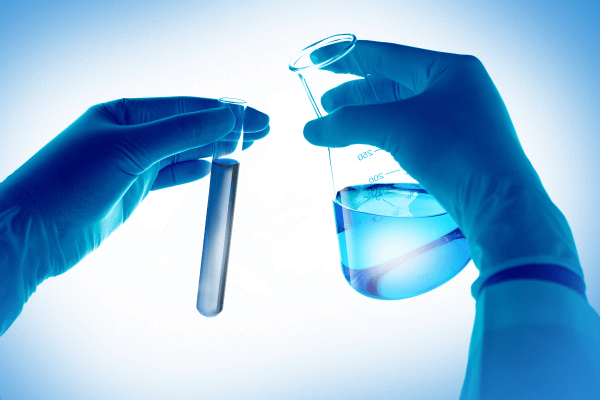Blog
Top 5 Chemicals in the UAE Market for Water Treatment

Water treatment is a foundational component of sustainable infrastructure, particularly in the UAE, where desalination, industrial processes, and water reuse dominate the landscape. With limited natural freshwater sources, the reliability and safety of treated water are essential for municipal supply, industrial operations, and environmental protection. Chemicals remain central to this process, providing the means to purify, stabilize, and disinfect water in a controlled, scalable manner.
Below is a review of the top five water treatment chemical categories most widely used across the UAE’s water treatment applications, from desalination plants to cooling towers and utility systems.
Why Chemicals Are Critical in Water Treatment
Natural and brackish water sources typically contain a range of impurities including mineral salts, organics, pathogens, and suspended solids. If left untreated, these contaminants can accelerate corrosion, reduce equipment lifespan, disrupt processes, and pose significant public health risks. The strategic application of water treatment chemicals ensures water is biologically safe, chemically stable, and compliant with regulatory standards.
1. Chlorine The Most Common Disinfectant
Chlorine remains the principal disinfectant in water treatment across the UAE, widely used for potable water systems, municipal infrastructure, and swimming pools. It effectively neutralizes a broad spectrum of microorganisms including bacteria, viruses, and protozoa.
Mechanism of Action:
Chlorine is introduced as gas, sodium hypochlorite (liquid), or calcium hypochlorite (solid). Upon contact with water, it forms hypochlorous acid, which penetrates microbial cell walls and deactivates essential enzymes and proteins.
Applications:
Used in drinking water plants, desalination systems, and emergency disinfection scenarios. Its effectiveness and low cost make it ideal for continuous use, though proper dosage is critical to avoid the formation of disinfection byproducts such as trihalomethanes (THMs).
2. Coagulants (Alum and Ferric Chloride) For Sediment and Turbidity Control
Coagulants facilitate the removal of suspended solids and colloidal material from raw water, particularly during the clarification phase of treatment. They enable particle agglomeration into flocs that can be easily separated via sedimentation or filtration.
Mechanism of Action:
Aluminum sulfate (alum) and ferric chloride are added to destabilize negatively charged particles. The neutralized particles aggregate into larger masses, enhancing removal efficiency in downstream processes.
Applications:
Deployed in large-scale municipal plants and industrial pre-treatment units. They are critical in enhancing filtration performance, protecting membranes, and reducing turbidity and organics.
3. Antiscalants Critical for Desalination and RO Systems
Antiscalants are indispensable water treatment chemicals in the UAE’s desalination sector, where reverse osmosis (RO) is a primary method of water production. They prevent mineral scaling on membrane surfaces and heat exchange equipment, maintaining optimal flow rates and energy efficiency.
Mechanism of Action:
Antiscalants work by interfering with crystal nucleation and growth processes, keeping scale-forming ions like calcium, magnesium, and sulfate in a soluble state even under high recovery conditions.
Applications:
Widely applied in seawater and brackish water RO systems, district cooling systems, and industrial water reuse facilities. Their use reduces membrane cleaning frequency and extends service life.
4. Biocides for Microbial and Biofilm Control
Biocides are applied to control microbial populations in water systems. These compounds are vital for biofouling prevention and system hygiene in both open-loop and closed-loop circuits.
Mechanism of Action:
Oxidizing biocides (e.g., chlorine dioxide, bromine) destroy cellular structures via oxidation, while non-oxidizing biocides (e.g., isothiazolinone, glutaraldehyde) disrupt metabolic activity and cell replication. Selection depends on system characteristics and microbial profile.
Applications:
Used extensively in cooling towers, HVAC systems, RO pre-treatment, and process water networks. Proper biocide programs prevent corrosion, biological clogging, and operational inefficiencies.
5. pH Adjusters (Lime and Sulfuric Acid) For pH Stabilization and Process Optimization

Maintaining optimal pH levels is essential for the efficacy of other chemical treatments and for equipment longevity. pH adjusters are used to tailor water chemistry to the specific needs of the process or application.
Mechanism of Action:
Lime (calcium hydroxide) is used to raise pH and precipitate hardness ions, while sulfuric or hydrochloric acid lowers pH for corrosion control and scale prevention. pH levels also influence disinfection kinetics and solubility of chemical species.
Applications:
Common in boiler feedwater treatment, potable water systems, and industrial wastewater neutralization. pH control ensures regulatory compliance and optimal system performance.
The UAE’s Expanding Need for High-Performance Water Treatment Solutions
Driven by rapid urbanization and industrialization, the UAE continues to invest heavily in water treatment infrastructure. The Ministry of Energy and Infrastructure’s strategic initiatives under Vision 2030 underscore the importance of advanced chemical solutions that support environmental sustainability and operational resilience.
At General International, we provide a full range of performance-tested water treatment chemicals tailored for UAE applications. Whether you are managing a municipal plant, a cooling system, or a desalination facility, our technical team can help optimize your chemical treatment strategy.
For expert guidance, contact us at +971 56 177 7276.